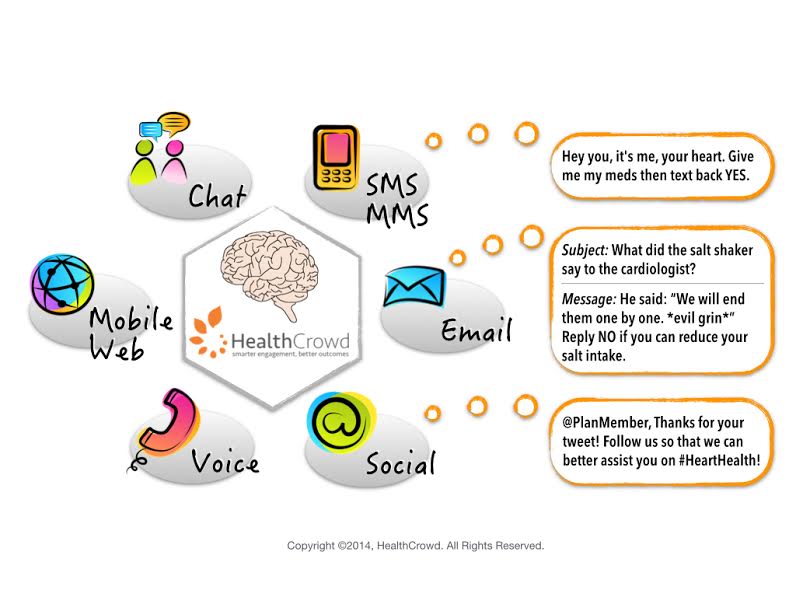 HealthCrowd, text-message-based patient engagement strategy, has completed a pilot with New York Medicaid plan Healthfirst, showing that 86 percent of Healthfirst's Medicaid population was equipped to receive text messages.
HealthCrowd, text-message-based patient engagement strategy, has completed a pilot with New York Medicaid plan Healthfirst, showing that 86 percent of Healthfirst's Medicaid population was equipped to receive text messages.
"Over 80 percent of the population we intervened on had a mobile phone," Neng "Bing" Doh, HealthCrowd's CEO and cofounder, told MobiHealthNews in an exclusive interview. "Historically, a lot of Medicaid plans have had the preconception that because their members were lower income, that they didn’t have mobile phones. Another preconception is that people don’t want to pay for these messages or [that they] find them intrusive. We absolutely debunked that as well. Our response rate was anywhere from 30 to 60 percent and our opt out rate was really really low; it was 3.7 percent."
HealthCrowd worked with 941 patients for two and a half months during the study. The target group was pregnant women and families with children and teens, and the interventions were designed to encourage families to get vaccinations, well child visits, and/or prenatal care.
First off, to address concerns Doh says HealthCrowd frequently encounters, they scrubbed Healthfirst's phone database to determine that 62.9 percent of the phone numbers were cellular, 23.5 percent were voice over internet protocol, and only 13.4 percent were landlines. They also reported how many users opted out of the service -- just 34 of the 941 -- and how often the users responded to the interactive messaging. The average response rate was 30.7 percent.
Finally, Doh and her team also wanted to look into whether the text messages were actually successfully driving action, getting parents to bring their children in for a vaccination or checkup.
"We found out with 80 percent confidence, members who responded more, or who were chattier were actually more likely to take action, so that was quite interesting," said Doh. "And in terms of outcomes we were also able to demonstrate that our program was able to get 32 percent of the members that participated to take an action in just a little shy of two and a half months."
The company also projected that, if given a full year, they could get that number up to 86 percent. In terms of cost effectiveness, the study showed that HealthCrowd's text messaging platform was 15 to 100 times more effective than other modalities and provided a three to 30 times better return on investment (ROI) when normalized for cost.
Specifically, it was 100 times more effective than postcards, 50 times more effective than buckslips in mailers, 30 times more effective than voice calls, and 15 times more effective than email. The ROI was 30 times as good as postcards, 35 times as good as buckslips, seven times as good as voice calls, and three times as good as email.
Smartphone apps were not addressed in the study, but just as she asserted when MobiHealthNews talked to HealthCrowd in 2012, Doh maintains that text messaging is still better positioned to reach more patients.
"About 40 percent of these members actually have smartphones," she said. "But as we discussed back in 2012, and I think it’s still true, it’s really hard to get a patient or a member to actually download an app the health plan wants them to download and it’s even harder to get them to use it. So we see text messaging not only as a very strong communications channel, but one that will increase in usage over the next three to five years."
That said, as of a few months ago, HealthCrowd provides options for health plans that don't want to use text messages or exclusively text messages. HealthCrowd 2.0 launched in June and added instant messaging, email, interactive voice response, web and mobile web, social media and paper-based outreach to its portfolio.
"We want to help health plans engage their members in any way in which they want to reach out and any way that patients might respond," Doh said. "There’s always going to be a subset of the population that maybe doesn’t want to communicate via text and if that’s the case, we have a holistic solution."













